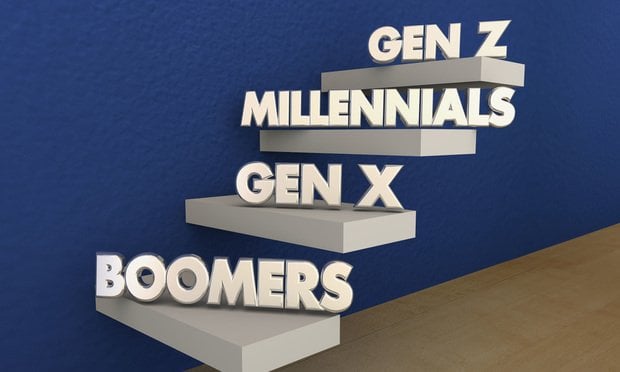 By manymetrics the #MeToo movement has had a measurable effect onworkplaces, even outside of the firings of certain high profile badactors. (Photo: Shutterstock)
By manymetrics the #MeToo movement has had a measurable effect onworkplaces, even outside of the firings of certain high profile badactors. (Photo: Shutterstock)
Has the workplace changed in the year since New York Timesreported the first allegations against movie producer Harvey Weinstein? At the very least, manypowerful men have altered their behavior, according to a newsurvey from the Society for Human Resource Management.
|A third of the more than 1,000 executives surveyed said they'veadjusted their behaviors at work to avoid what could be perceivedas sexual harassment.
|Related: #MeToo lawsuits: What a company's liabilityinsurance can and can't do
|“We know that in that universe of executives, there was somepopulation that needed to get themselves in check,” said JohnnyTaylor, president and chief executive officer of SHRM. “I'm notconvinced we would've done it without the identification of thoseWeinstein cases.”
|Human resources consultant Sharon Sellers confirmed the shift.“There are executives who are being more cautious about whatthey're saying and what is said in the workplace,” said Sellers,founder of SLS Consulting LLC in Santee, South Carolina.
|But changes may have gone too far in some instances, with menover-correcting and leaving women out of business discussions ormentoring opportunities. One executive told Sellers he now wouldn'tget into an elevator alone with a woman.
|'Unintended consequences'
“I'm extremely concerned there may be unintended consequences,”Sellers said. That's consistent with a Pew Research Center surveyreleased in April that found 20 percent of respondents believedthat the increased awareness of sexual harassment may lead to feweropportunities for women.
|The SHRM poll, released last week, found 45 percent of thosesurveyed said they haven't changed the way they act all, andanother 21 percent said they had made only small changes. Since notall executives had behavior that needed changing that isn't asurprise, Taylor said.
|Executives, when asked by SHRM, for the most part reportchanging their behavior in appropriate ways. Of those surveyed, 24percent said they were more careful about what language they usedand 16 percent said they avoid specific topics or jokes. Another 9percent said they no longer touch employees at work.
|By many metrics the #MeToo movement has had a measurable effecton workplaces, even outside of the firings of certain high profilebad actors. A number of companies have revamped their sexualharassment training programs, for example.
|A June study by Challenger Gray & Christmas found that overhalf of the 150 companies they surveyed reviewed their sexualharassment policies, up from about a third in January. A littleunder half of those surveyed said they weren't comfortable withtheir current policies.
|Bystander training
“Managers are very concerned,” said Sellers, the HR consultant,who estimates that she's seen a 30 percent to 45 percent jump inrequests from companies to do training on workplace behavior. Shehas a wait-list through 2019, she says.
|The new programs mark a shift in focus from straightforwardeducation on harassment to bystander training, says Sellers. “We'remaking sure employees realize if they see something in theworkplace that does not seem appropriate, they should saysomething,” she said. “We want accountability from everyone.”
|Research has found that traditional sexual harassment trainingdoesn't do much to prevent harassment and can backfire at times. Bycontrast, research has found that bystander training cansuccessfully change attitudes: One study found that people whounderwent the training were more likely to report harassment thanthose who did not.
|Some data indicate that reporting of incidents has alsoincreased. After hitting a two-decade low in 2017, sexualharassment complaints to the Equal Employment OpportunityCommission increased by more than 12 percent from last year. Thefederal agency has also been aggressive with litigation this year,filing 41 sexual harassment lawsuits so far, up from 33 in2017.
|“At a minimum, there's now an open conversation that thisbehavior is still occurring,” said SHRM's Taylor. “Don't thinkwe've solved for this by highlighting one or two industries.”
|Are your sexual harassment policies up todate?
- HR's #MeToo dilemma: How much to say about firedemployees?
- 5 questions to help guide the overhaul of yoursexual harassment policies
- Constructing a workplace environment that rejectssexual harassment
Copyright 2018 Bloomberg. All rightsreserved. This material may not be published, broadcast, rewritten,or redistributed.
Complete your profile to continue reading and get FREE access to BenefitsPRO, part of your ALM digital membership.
Your access to unlimited BenefitsPRO content isn’t changing.
Once you are an ALM digital member, you’ll receive:
- Critical BenefitsPRO information including cutting edge post-reform success strategies, access to educational webcasts and videos, resources from industry leaders, and informative Newsletters.
- Exclusive discounts on ALM, BenefitsPRO magazine and BenefitsPRO.com events
- Access to other award-winning ALM websites including ThinkAdvisor.com and Law.com
Already have an account? Sign In
© 2024 ALM Global, LLC, All Rights Reserved. Request academic re-use from www.copyright.com. All other uses, submit a request to [email protected]. For more information visit Asset & Logo Licensing.








